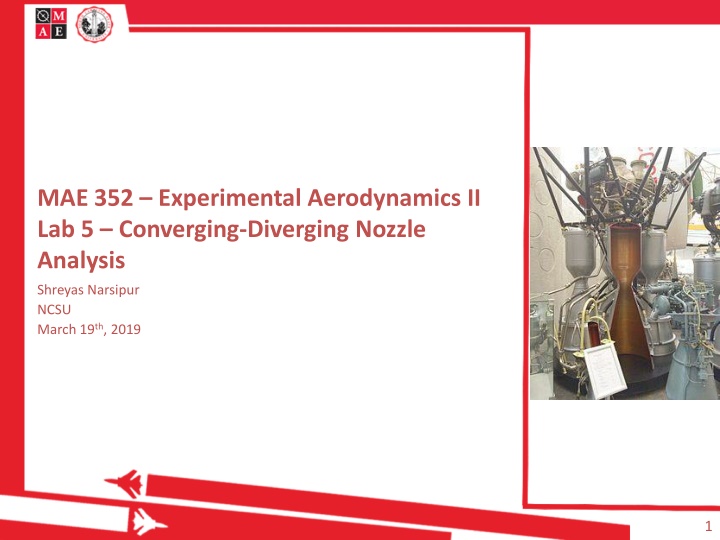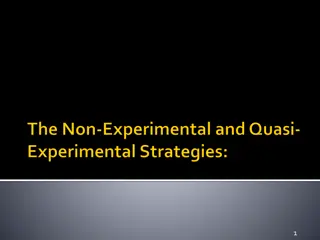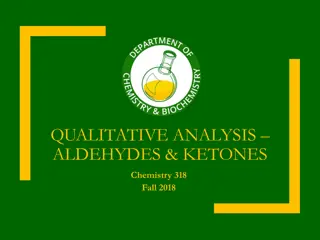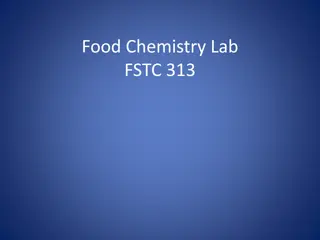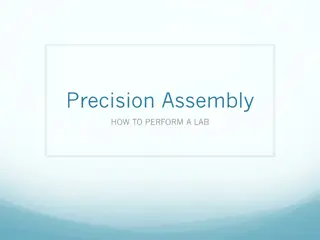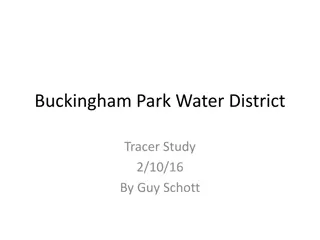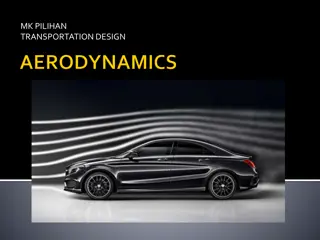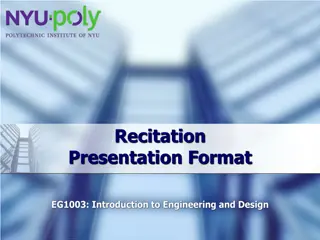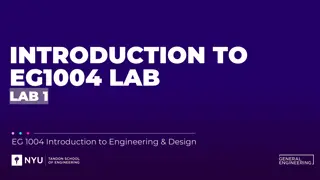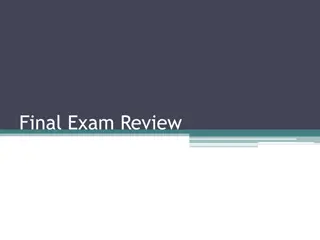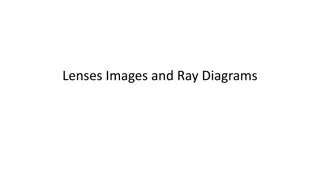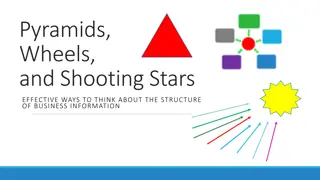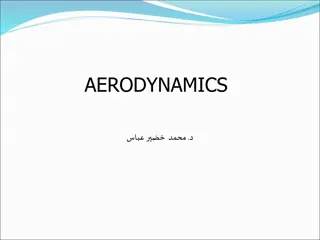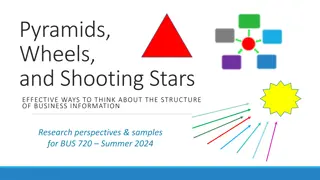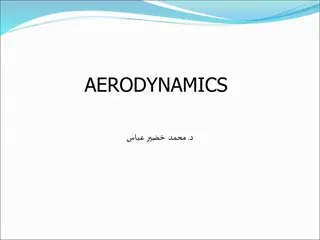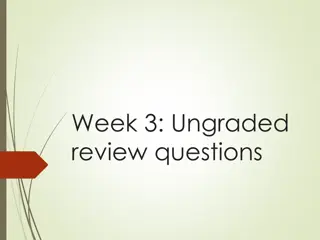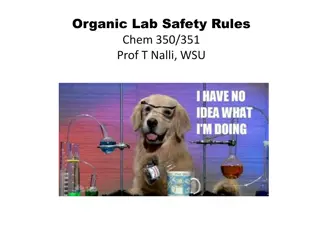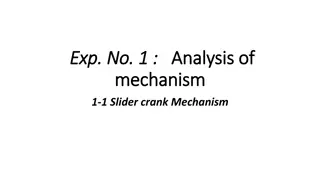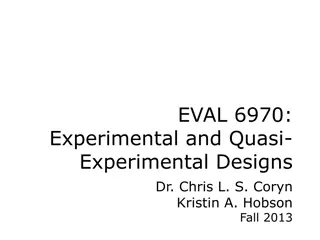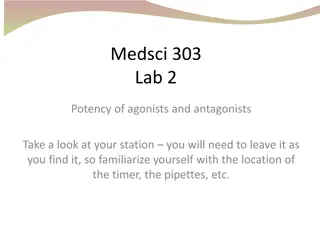Experimental Aerodynamics II Lab 5: Converging-Diverging Nozzle Analysis
This lab focuses on understanding and analyzing the converging-diverging nozzle in a supersonic wind tunnel facility at NCSU. It involves studying different flow regimes, plotting pressure and temperature variations, and identifying flow conditions based on back pressure ratios. The lab aims to characterize the nozzle through data acquisition and analysis.
Download Presentation

Please find below an Image/Link to download the presentation.
The content on the website is provided AS IS for your information and personal use only. It may not be sold, licensed, or shared on other websites without obtaining consent from the author.If you encounter any issues during the download, it is possible that the publisher has removed the file from their server.
You are allowed to download the files provided on this website for personal or commercial use, subject to the condition that they are used lawfully. All files are the property of their respective owners.
The content on the website is provided AS IS for your information and personal use only. It may not be sold, licensed, or shared on other websites without obtaining consent from the author.
E N D
Presentation Transcript
MAE 352 Experimental Aerodynamics II Lab 5 Converging-Diverging Nozzle Analysis Shreyas Narsipur NCSU March 19th, 2019 1
Outline Lab 5 - Objective Lab 5 Theory Lab 5 - Expectations 2
Lab 5 - Objective Understand the nozzle test rig in NCSU s supersonic wind tunnel facility. Observe the different regimes of flow in a converging- diverging nozzle. Plot and study the pressure and temperature variations across the converging-diverging nozzle from no-flow to supersonic-isentropic flow condition. 3
Lab 5 - Theory CD-nozzles are used to accelerate the fluid to M > 1. The back pressure (pB)/ temperature (TB) is the driving factor that determines the flow condition in the nozzle. When pO = pB, there is no flow through the nozzle. As pB is reduced, the Mach number at the throat (pT) keeps rising until the flow is chocked (MT = 1). Beyond that point, a decrease in back pressure ratio can result in the following flow conditions: subsonic isentropic flow (the flow decelerates after the choked condition) supersonic non-isentropic flow (where the flow accelerates supersonically, forms a normal shock, and decelerates subsonically after the shock) supersonic isentropic flow (where the flow accelerates supersonically after the choked condition). 4
Lab 5 - Theory The following are the flow conditions that can be observed in a converging-diverging nozzle, Subsonic flow (never reaches choked condition). Subsonic flow reaching choked condition, never reaching supersonic velocities (considered isentropic). Subsonic flow reaching choked condition, the resulting supersonic flow results in a normal shock, then subsonic deceleration. Subsonic flow reaching choked condition, the resulting supersonic flow results in a normal shock, after the nozzle (considered isentropic in the nozzle). Over-expanded flow. The flow after the choked condition is supersonic through the nozzle, and no shock is formed. Under-expanded flow. 5
Lab 5 Expectations Using the nozzle test rig in NCSU s supersonic wind tunnel facility, characterize the converging-diverging nozzle. Data acquired: Tap Tap Axial Nozzle Pstatic (psi) PO (psi) Mass Patm (psi) Number Positon Area Flow Rate (inches) Ratio (slugs/second) (A/Ai) Plot the following data (calculated at the tap locations) with respect to the normalized nozzle distance for all runs: p/pO o Mach Number Identify the flow regimes and flow conditions in the above. Plot the mass flow parameter (MFP) with respect to the back pressure ratio (pB/pO). Plot the pressure ratios at the throat and exit with respect to the back pressure ratio and identify the flow regimes and conditions pE/pO vs. pB/pO pT/pO vs. pB/pO o 6
Lab 5 Expectations Pressure readings from tap 10 can be considered as the back pressure (pB) conditions. Pressure readings from tap 9 can be assumed to be the exit pressure (pE) conditions. Pressure readings from tap 3 can be assumed to be the throat pressure (pT) conditions. 7
